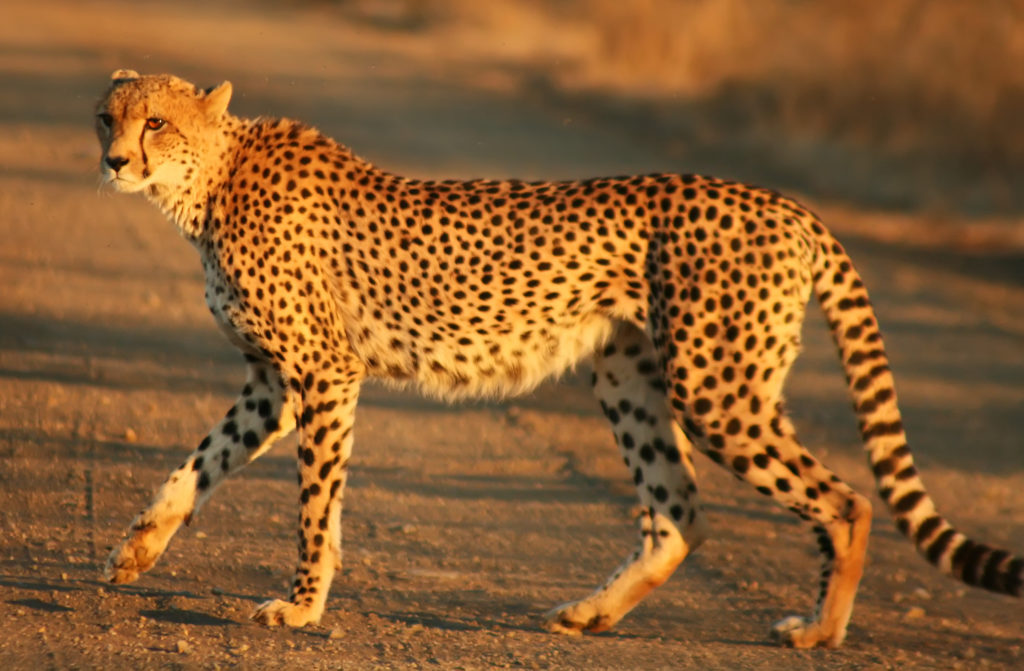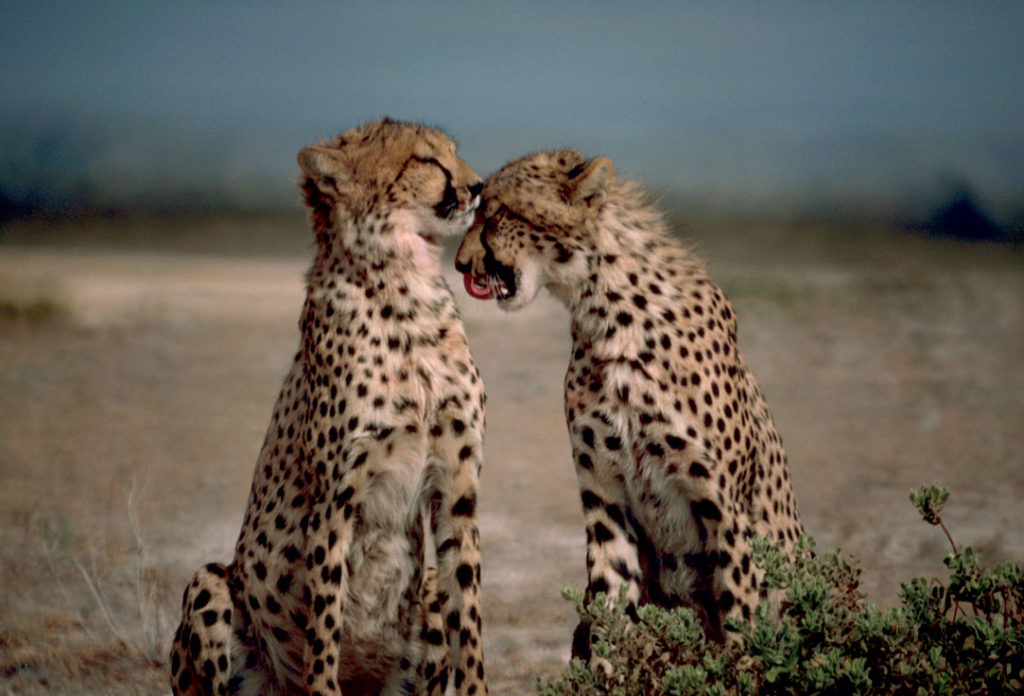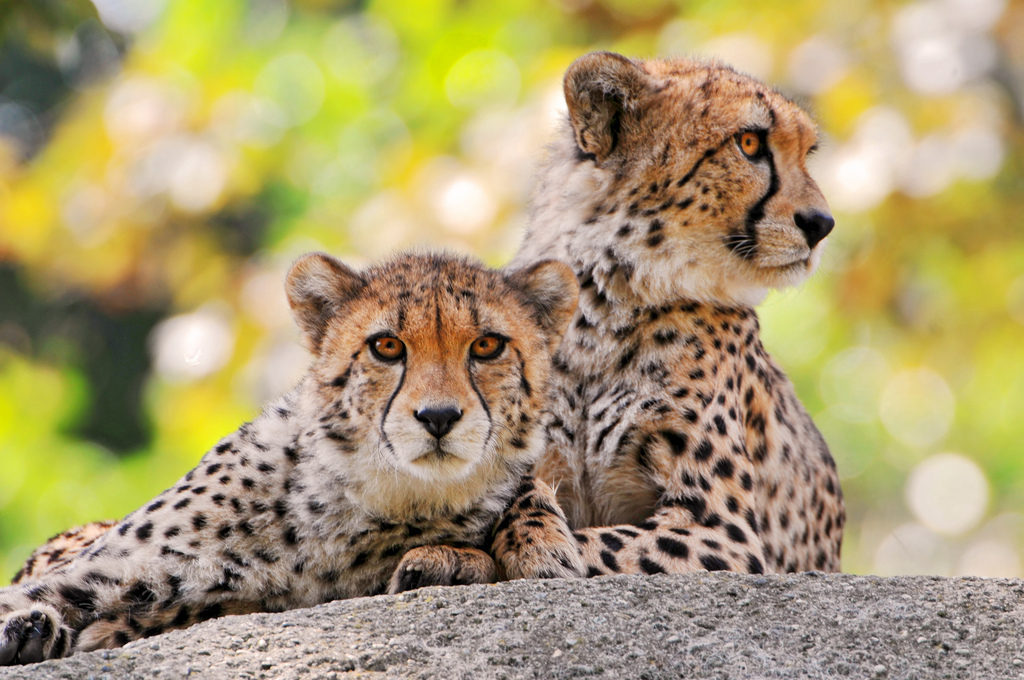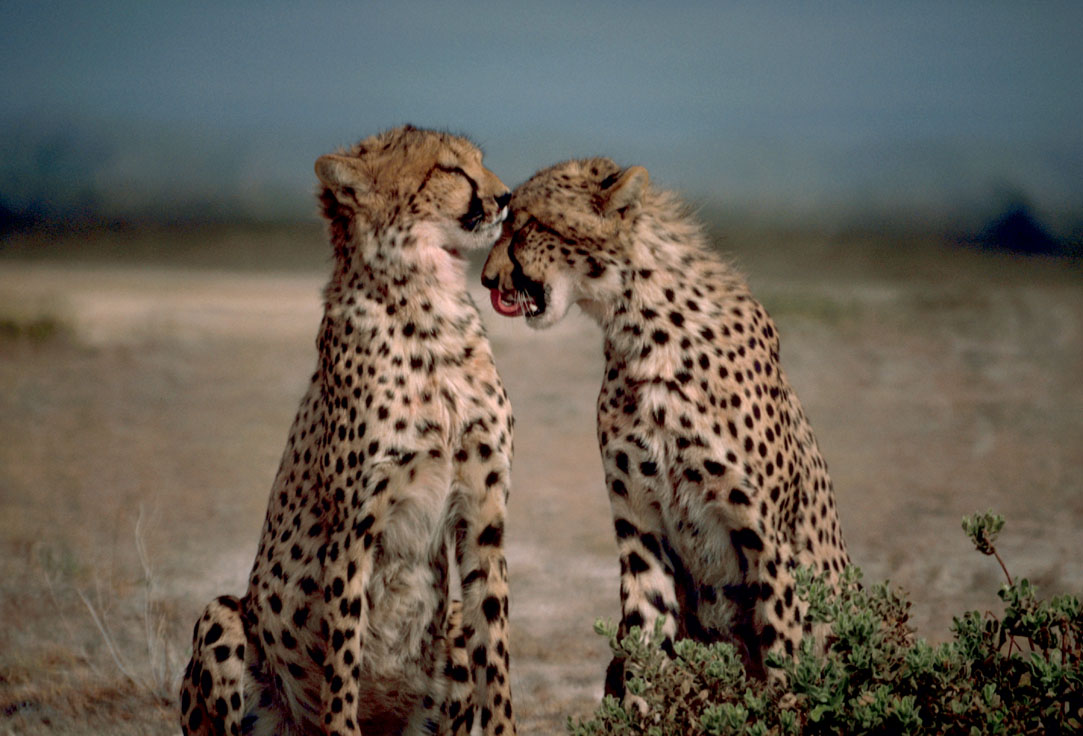The cheetah is the fastest land mammal on the planet. With its graceful and elegant look, it belongs to the big cats family. Take a look below for 28 more amazing and weird facts about cheetahs.
1. Cheetahs belong to the Acinonyx lubatus family of big cats.
2. On average, cheetahs live to be 17 years old, but some have lived up to 20 years.
3. It’s body is 1.1 to 1.5 meters long, with its tail being 60 to 80 centimeters in length. Its weight is between 110 and 140 pounds at full maturity.
4. Cheetahs once lived across Africa, Asia and certain parts of the Middle East. Currently, however, they can only be found in sub-Saharan Africa and parts of Iran.
5. In 1900, there were more than 100,000 cheetahs. Currently, there are about 9,000 to 12,000, making them an endangered species.
6. Unlike lions and tigers, cheetahs don’t roar. It tends to purr and make chirping sounds to communicate with other cheetahs.
7. They have tear stripes that start at corner of their eyes and stretch all the way down to their nose.

8. Its fur is tan in color so that it can easily blend in with the tall grass of the savannah. It’s entire body is covered with black spots, though each pattern of spots is different in every cheetah making them uniquely identifiable.
9. Cheetahs need to drink water every 3 to 4 days though they’re able to draw fluid from the food that they eat.
10. Cheetah’s can run at speeds of 70 miles per hour and can accelerate from 0 to 60 miles per hour in just 3 seconds. However, it can only sprint at top speed for 100 years, beyond which its body quickly overheats.
11. While chasing its prey, the cheetah’s body temperature can reach up to 105 degrees Fahrenheit or 41 degrees Celsius.
12. The cheetah’s designed for pure speed. It has muscular, slim and long legs with non-retractable claws, a deep chest and flexible spine. It has a small round head on a long neck with special traction pads on the bottom of its feet.
13. They use their tail for balancing and steering while running. The tail allows them to take sharp turns in any direction while running at top speed.
14. Cheetahs usually hunt smaller animals like impalas, gazelles, birds and hares. However, they have been known to hunt in groups when taking on larger animals like zebras and wildebeests.
15. They don’t stalk their prey. They creep up as close as possible before chasing them down for 20 to 30 seconds.

16. They use their sharp claws to knock the prey down before biting them on the neck and killing them.
17. If the hunt is successful, cheetahs will eat their food quickly to prevent scavengers from getting in close. Known opportunistic scavengers are jackals, vultures, leopards, lions and hyenas.
18. Female cheetahs teach their offspring to hunt by catching the prey alive. Instead of biting it on the neck, the mother catches the prey by the head and releasing it in front of their offspring to watch them chase it down again.
19. Cheetah’s mate throughout the year and have a pregnancy period of 3 months. Usually 2 to 4 cubs are born in a litter.
20. Female cheetahs raise the cubs by themselves. They feed and train the cubs for about a year.
21. When caring for her cubs, the female cheetah will leave them in the den alone while she hunts. She will occasionally check up on them to make sure that there are no predators around.
22. They will also change the lair every 4 days, to make sure that predators can’t find them.
23. During the first 6 months from birth, the cheetah cubs are entirely dependent on their mother.

24. After the first month, the cubs will start crawling and standing. After 1 to 2 weeks, they will open their eyes.
25. By the time they turn 1, the cubs will become effective hunters and will start to hunt on their own. Their mother will usually join them to guide them and fix their mistakes.
26. When they are 15 months old, the cubs will move out on their own. Male cubs will often find other male cubs to roam and hunt with.
27. Female cheetahs are solitary by nature but prefer living in isolation when raising cubs.
28. Male cheetahs are communal and will roam with other males in small tribes of the same or different litter.





One Comment
Pingback:
February 3, 2018 at 5:31 pm